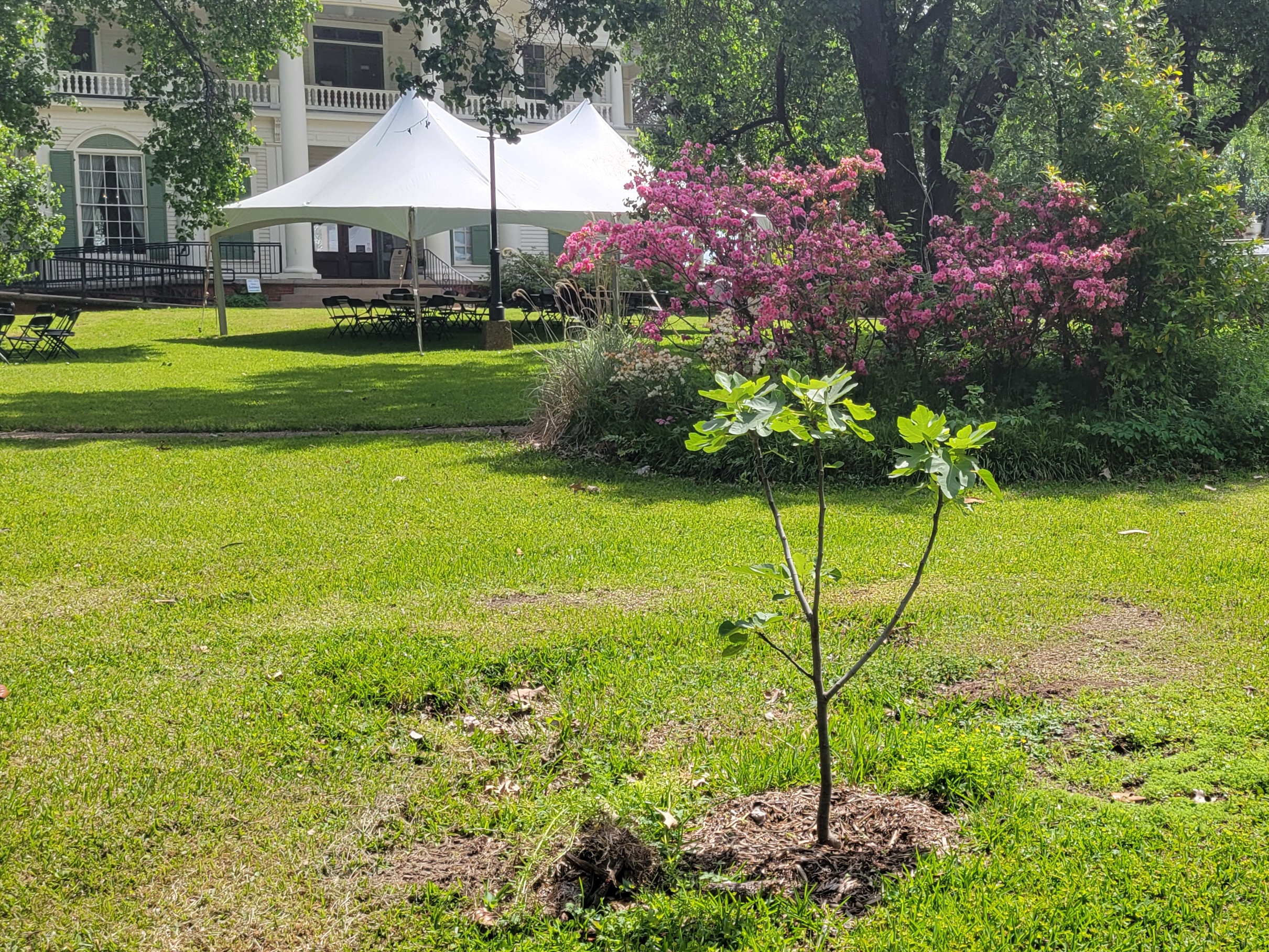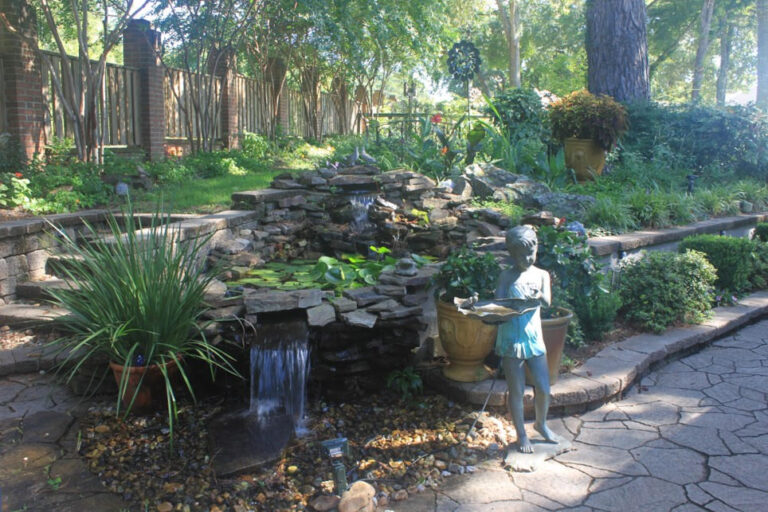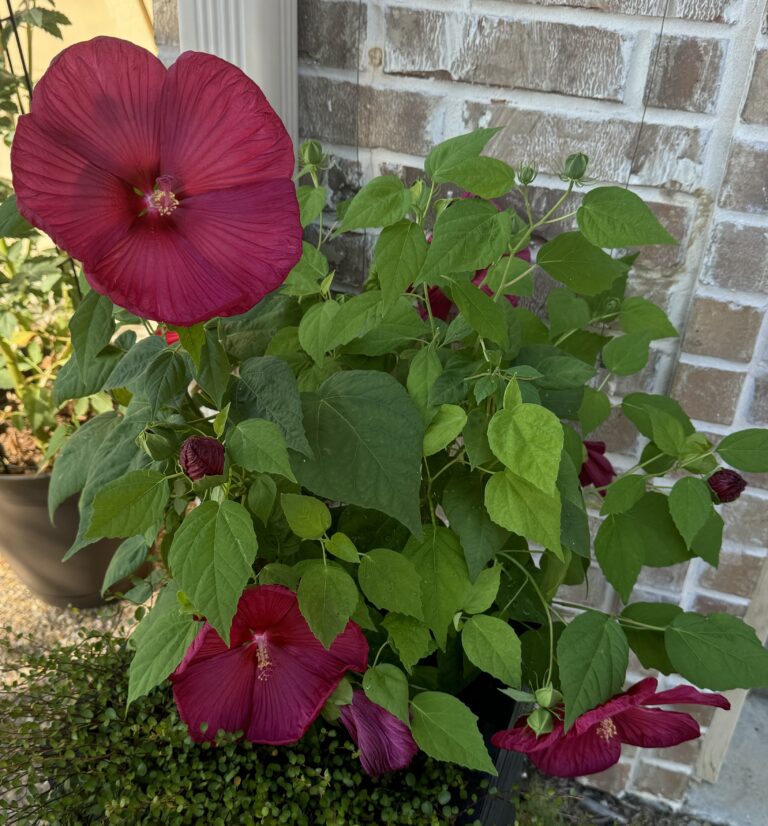Goodman LeGrand House Fig Tree
There was a storied fig tree planted at the Goodman Legrand house, that was celebrated not only by the house’s residents but by visitors for a century. The tree was one of the first horticultural improvements made to the property when Gallatin Smith purchased the land in 1859 and built the dog trot cabin that he named Bonnie Castle. The stately Goodman Le Grand home is built around “Gally” Smith’s more humble one story house. The ground floor back rooms and central hall, still have the original cabin walls and provides the structure which defines the interior architecture.
Sallie Goodman Legrand wrote in her diary on July 10th of 1904: “This afternoon Jim and I made a visit to the fig tree. It is always an occasion of rejoicing when its fruit begins to ripen. This old tree has stood at the back garden fence for fifty years, having been planted there by Mr. Gallatin Smith, a well to do young bachelor who owned this place. He also planted the old lilac bush at the garden gate.”
The fig is also mentioned in a short history of the house that Ann Cathey wrote for the Pilot Club in 1946. She says, “Northwest of the house is a fig tree planted by Gallatin Smith in 1860 when he built Bonnie Castle”. By the time she wrote that the tree was nearly 90 years old. It survived into the late 1960’s when the venerable old fruit tree finally expired from age accelerated by the damage of several freezes, but not before having passed the century mark.
Though we are not certain of the variety, the tree was likely a Brown Turkey fig, which is a common name for several similar varieties of fig that produce twice a year. It is the most popular type of fig grown in the world and as a result there are many local variations. The tree is large, long lived, and can grow up to 30 feet tall and wide. Thomas Jefferson cultivated Brown Turkey figs along with two French varieties at Monticello. The Spanish and French settlers also brought them to the areas of the country they colonized. They planted these trees all over the coastal American South and the West.
The Brown Turkey is hardy and an abundant bearer in the warmer areas of the United States. At maturity they can produce an early crop of large fruit in July and a second harvest of sweeter, smaller, fruit in the drier, cooler weather of late fall. The fruits do not keep well and need to be eaten, cooked, or preserved within 3 to 5 days of harvesting. They are so tasty that it is seldom a problem to eat them quickly. The fruit of the Brown Turkey is hardly ever found for purchase because of its short shelf life. Having your own tree, or a generous neighbor with one, is imperative to reap the benefits of the purple and brown fruit, hence its wide planting distribution by fig lovers anywhere they will grow.
Recently a young Brown Turkey fig was planted on the Goodman LeGrand Museum grounds as part of the garden restoration project that is a partnership between the City of Tyler Parks Department and the Smith County Master Gardeners. The planting celebrates Gallatin Smith’s original tree and carries on the tradition of gardening that the Goodman family cherished. The tree is planted on the west side of the house almost directly across from the entrance to the museum, just beyond the flower and shrub beds. We hope it has as long and rich a history as its predecessor.
E. Waldrop Smith County Master Gardener
Special thanks to the Smith County Historical Society Archives and their publication; The Chronicles of Smith County, Texas: Vol 7, Number 2, Fall 1968.



